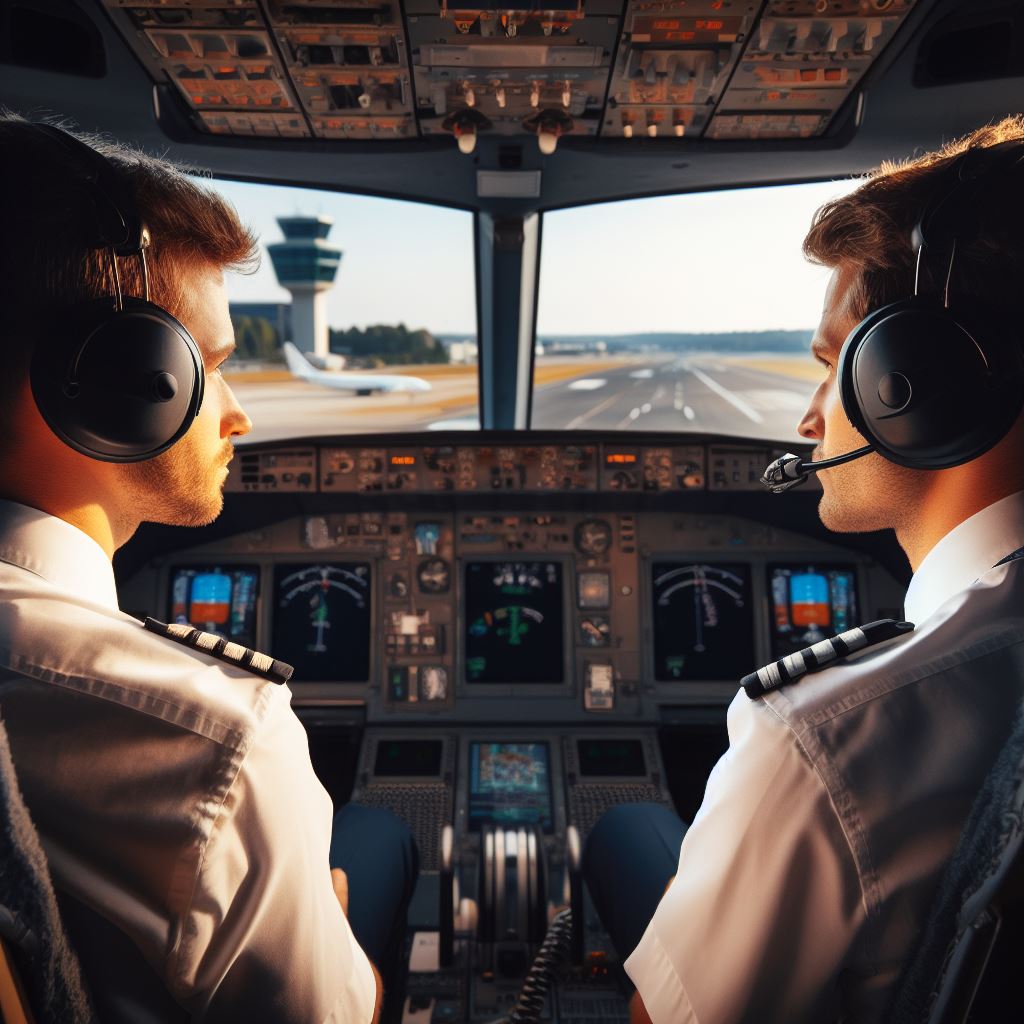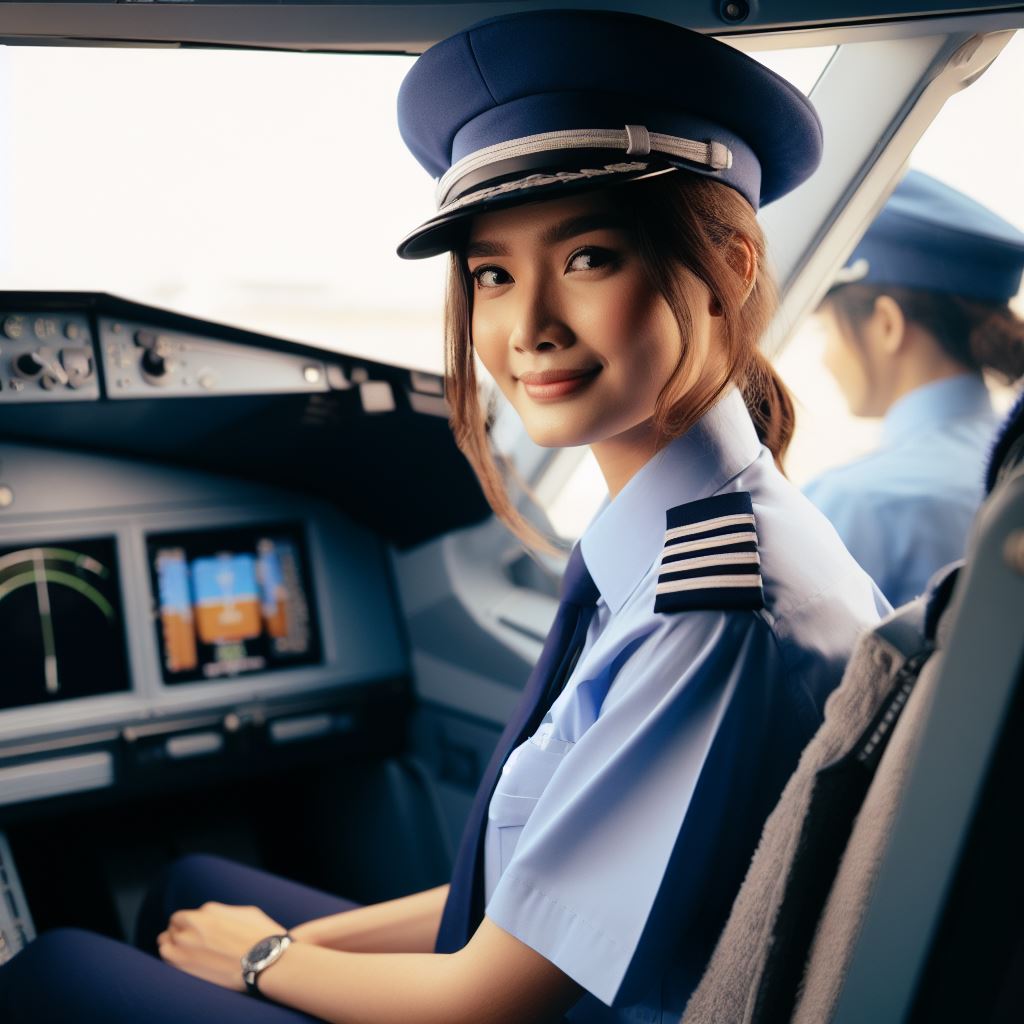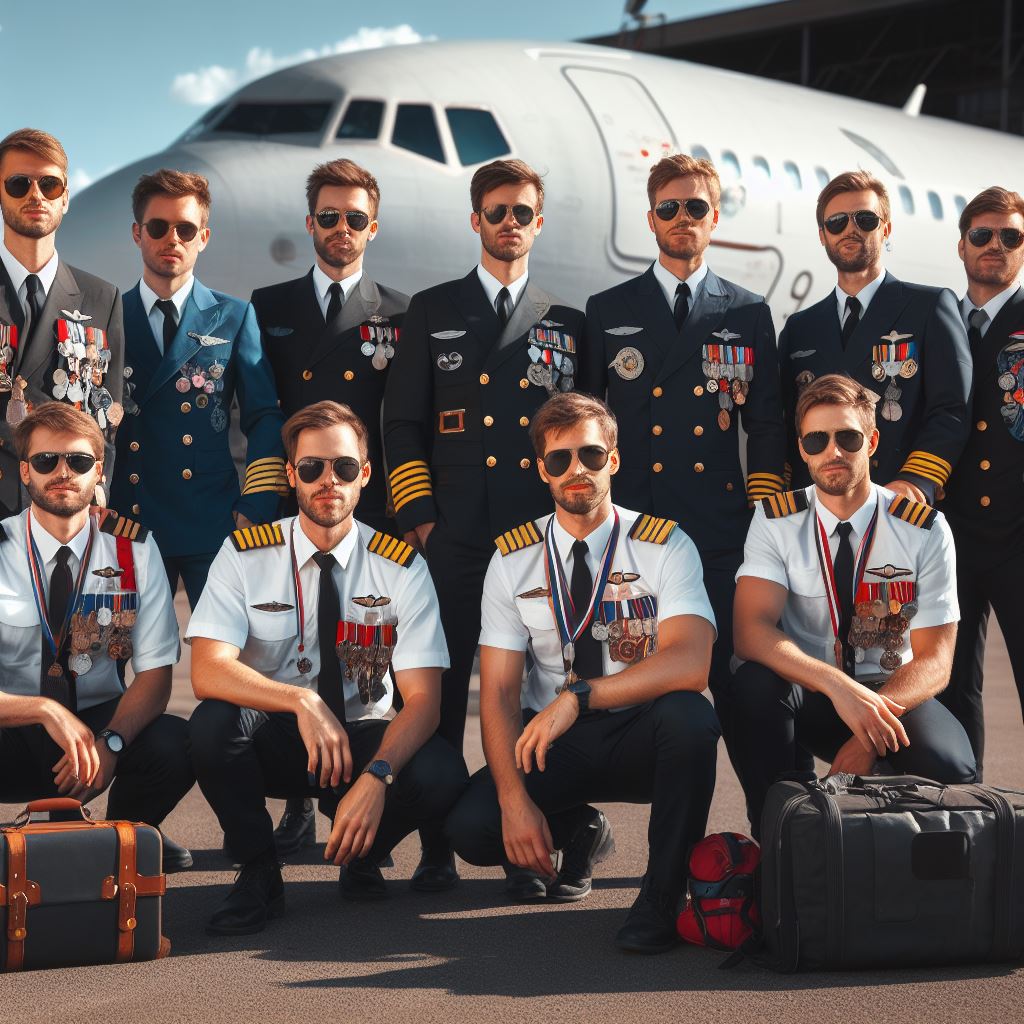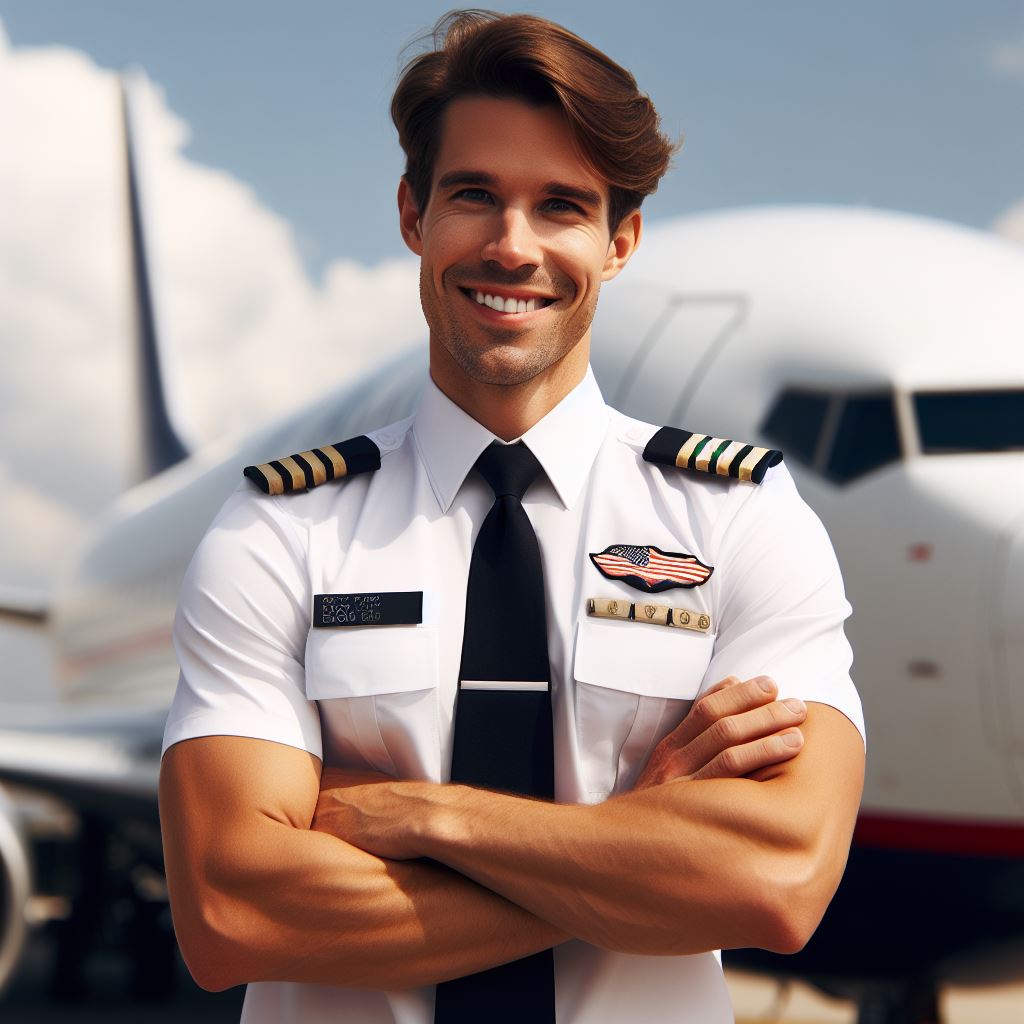Introduction
There are many common misconceptions surrounding pilots that need to be debunked.
These misconceptions often stem from inaccurate portrayals in popular culture and lack of understanding about their profession.
It is important to dispel these misconceptions as they can create unnecessary fear and doubt about pilots’ abilities and responsibilities.
Common misconceptions surrounding pilots
One common misconception is that pilots have superhuman abilities and never make mistakes.
In reality, pilots are highly trained professionals who undergo rigorous training and adhere to strict safety protocols, but they are still prone to human error.
Another misconception is that pilots have glamorous lifestyles and travel to exotic destinations on a regular basis.
While pilots do get to visit different cities, their work involves long hours, irregular schedules, and time away from their families.
The importance of debunking these misconceptions
Debunking these misconceptions is crucial for several reasons.
Firstly, it helps the general public to have a more accurate understanding of pilots and their profession.
This knowledge can alleviate unnecessary anxieties and fears while flying.
Secondly, debunking misconceptions can inspire and encourage aspiring pilots.
By debunking the notion of superhuman abilities, it becomes clear that with dedication and hard work, anyone can pursue a career in aviation.
Lastly, debunking these misconceptions fosters an atmosphere of trust and respect towards pilots.
Understanding the challenges and responsibilities they face can lead to better cooperation between pilots and passengers, ultimately enhancing the overall flying experience.
In essence, debunking the common misconceptions surrounding pilots is vital in creating a more accurate perception of their profession.
By dispelling myths about their abilities and lifestyle, we can foster a greater sense of trust, encourage aspiring pilots, and alleviate unnecessary fears while flying.
Misconception 1: Pilots are glorified drivers
Contrary to popular belief, pilots are far more than just glorified drivers.
They undergo extensive training and possess a wide range of skills and knowledge that are crucial for their profession.
1. Skills and Training Required
- Pilots undergo years of training, both in the classroom and in the cockpit, to acquire the necessary skills.
- They must obtain a commercial pilot’s license, which requires a minimum number of flight hours.
- They are trained in various flight maneuvers, emergency procedures, and navigation techniques.
- Pilots also learn to operate complex aircraft systems and deal with unpredictable situations.
2. Technical Knowledge
- Pilots possess a deep understanding of aerodynamics, physics, and meteorology.
- They need to interpret weather reports, assess weather conditions, and make informed decisions about flight routes.
- They are knowledgeable about aircraft systems and understand how to troubleshoot technical issues.
- Pilots are trained in avionics and can effectively utilize advanced cockpit technologies.
3. Decision-Making Abilities
- Pilots are responsible for the safety of their passengers, crew, and the aircraft.
- They must make split-second decisions in critical situations, such as during an emergency or adverse weather conditions.
- Pilots are trained to remain calm under pressure and to quickly assess and analyze different scenarios.
- They must consider factors like fuel consumption, time efficiency, and passenger comfort when making decisions.
4. Continuous Training and Evaluation
- Pilots undergo regular proficiency checks and recurrent training to ensure their skills are up to date.
- They attend simulator sessions to practice various challenging scenarios, such as engine failures or severe weather conditions.
- Training programs focus on enhancing pilots’ situational awareness and problem-solving abilities.
- They also learn about the latest regulations, procedures, and technological advancements in the aviation industry.
5. Responsibility and Teamwork
- Pilots are responsible for leading a team, including the flight crew and cabin crew.
- They must effectively communicate and coordinate with their team members to ensure a safe and efficient flight.
- Pilots are trained to handle emergency situations and manage passenger and crew interactions during stressful events.
- They are also responsible for maintaining professionalism and upholding aviation regulations and standards.
In fact, pilots are not merely glorified drivers but highly skilled professionals.
They possess technical knowledge, decision-making abilities, and undergo continuous training to ensure safe and efficient flights.
Transform Your Career Today
Unlock a personalized career strategy that drives real results. Get tailored advice and a roadmap designed just for you.
Start NowIt is essential to recognize and appreciate the expertise and dedication required for the demanding profession of a pilot.
Read: Stories from the Road: Interviews with Veteran Truckers
Misconception 2: Pilots have a lot of free time and glamorous lifestyles
When people think of pilots, they often imagine a life of luxury, jetting off to exotic destinations and enjoying a lot of free time.
However, this is one of the most common misconceptions about pilots. In reality, being a pilot requires long hours, demanding schedules, and a significant amount of sacrifice.
A pilot’s work schedule is anything but predictable. They might have to wake up at the crack of dawn one day and work late into the night the next.
They often have to be away from home for days at a time, spending nights in hotel rooms instead of their own comfortable beds.
The demanding nature of pilot work can take a toll on their personal lives.
They may miss important family events, such as birthdays, anniversaries, and holidays. It’s not uncommon for pilots to spend these special occasions thousands of miles away from their loved ones.
Furthermore, pilots often have to deal with the challenges of maintaining relationships while constantly being on the move.
Long-distance relationships can be particularly challenging, as pilots spend a significant amount of time away from home.
This can lead to feelings of loneliness and strain on their personal lives.
Contrary to the glamorous image portrayed in movies and media, pilots also face other hardships.
They have to deal with jet lag on a regular basis, which can affect their sleep patterns and overall well-being.
They also have to cope with the pressures and responsibilities of ensuring the safety of their passengers and crew.
Additionally, pilots have to undergo rigorous training and undergo regular evaluations to maintain their licenses.
They have to stay up to date with the latest aviation regulations, undergo medical examinations, and continuously upgrade their skills.
This requires a lot of dedication and hard work.
Challenges and sacrifices of pilots
- Unpredictable work schedules that can disrupt personal plans and time with loved ones.
- Being away from home for extended periods, missing important family events.
- Maintaining relationships while constantly being on the move can be difficult.
- Dealing with the physical and mental challenges of jet lag and long hours of work.
- Ensuring the safety of passengers and crew can be a stressful responsibility.
- Undergoing regular training, evaluations, and staying updated with aviation regulations.
Generally, the misconception that pilots have a lot of free time and glamorous lifestyles is far from the truth.
The demanding schedules, unpredictable nature of the work, and sacrifices pilots make in their personal lives demonstrate the realities of the profession.
Showcase Your Business Today
Reach thousands of readers actively exploring professional services. Publish your business profile and grow your audience now.
Publish NowIt’s essential to recognize and appreciate the dedication and hard work that goes into being a pilot.
Read: Why Trucking Remains Vital to the US Economy

Misconception 3: Pilots are always in control and never make mistakes
Pilots, like any human beings, are prone to making mistakes despite their extensive training.
1. Pilots are trained to deal with emergency situations
- Pilots undergo rigorous training to handle various emergency scenarios that may arise during flights.
- They are taught to stay calm, assess the situation, and make quick decisions based on their training.
- Simulator sessions allow pilots to practice handling emergencies in a controlled environment.
- By going through realistic simulations, pilots learn to respond effectively to critical situations.
- Training also includes studying past accidents and incidents, enabling pilots to learn from previous mistakes.
- Continuous improvement and refinement of emergency procedures are emphasized in pilot training programs.
2. Acknowledgment of human error and continuous learning in the aviation industry
- The aviation industry recognizes that human error is a reality and pilots are susceptible to it.
- Mistakes can range from minor errors in judgment to more significant lapses in following protocols.
- However, the industry places a strong emphasis on error prevention, detection, and mitigation.
- Pilots are encouraged to report their own errors or incidents so that lessons can be learned and shared.
- Aviation organizations work collaboratively to analyze errors and develop strategies to minimize their occurrence.
- Human factors training is an integral part of pilot education, focusing on decision-making and situational awareness.
- The aviation industry constantly evolves by incorporating lessons learned from accidents and near-misses.
It is crucial to understand that pilots are not infallible and can make mistakes.
However, their training equips them with the skills and knowledge to handle emergencies effectively.
In the aviation industry, there is a culture of learning from mistakes and continuously improving safety measures.
Pilots are taught to recognize and address human error through comprehensive training programs.
By acknowledging the potential for mistakes, pilots and aviation organizations can work together towards minimizing errors and enhancing flight safety.
Read: Top Paying Trucking Companies in the United States
You Might Also Like: The Impact of U.S. Regulations on the Logistician Profession
You Might Also Like: The Impact of Technology on US Truck Driving Jobs
Misconception 4: Only men can be pilots
The aviation industry has long been associated with a male-dominated field, leading to the misconception that only men can be pilots.
However, this notion couldn’t be further from the truth.
Women have made significant contributions to aviation throughout history, challenging societal norms and breaking barriers.
Brief history of women in aviation and the pioneering female pilots
To understand the role of women in aviation, let’s dive into a brief history of their presence in the industry.
The pioneering female pilots paved the way for their successors, inspiring generations of women to pursue careers in aviation.
One such pioneer was Amelia Earhart, who became the first woman to fly solo across the Atlantic Ocean in 1932.
Her achievements not only pushed the boundaries of aviation but also shattered the perception that flying was solely a man’s pursuit.
Statistics and success stories of women in the profession today
Despite the challenges faced by women in aviation, they have made remarkable progress.
Today, statistics reveal a growing number of women taking up careers as pilots.
According to the International Society of Women Airline Pilots, the percentage of female pilots in the industry has been steadily increasing over the years.
In fact, in some countries, women now represent nearly 10% of all pilots.
The success stories of women in the profession today are inspiring and reinforce the fact that gender is not a limitation in becoming a pilot.
Captain Tammie Jo Shults is a prime example. In 2018, she demonstrated her exceptional skills and calm under pressure when she successfully executed an emergency landing of a Southwest Airlines flight after an engine failure.
Women like Captain Shults prove that talent and ability, not gender, determine one’s capabilities as a pilot.
Another notable success story is that of Captain Chelsey “Sully” Sullenberger.
Capt. Sullenberger gained worldwide praise for his quick thinking and skillful handling of the “Miracle on the Hudson” in 2009 when he safely landed a commercial aircraft on the Hudson River.
His courageous actions saved the lives of all 155 people on board.
Further Statistics and success stories of women in the profession today
These success stories emphasize the competence and professionalism of women in aviation.
Women pilots are just as capable as their male counterparts and have worked hard to earn their place in the industry.
Furthermore, organizations and initiatives have been established to support and encourage women in pursuing aviation careers.
Groups like Women in Aviation International and the Ninety-Nines have worked tirelessly to provide scholarships, mentoring, and networking opportunities for women in the field.
These resources play a crucial role in nurturing female talent and fostering a more diverse and inclusive aviation industry.
Basically, the misconception that only men can be pilots is based on outdated stereotypes.
Women have played a significant role in aviation history and continue to make substantial contributions in the profession today.
The increasing number of women pursuing careers as pilots, along with their remarkable success stories, demonstrates that gender should never be a hindrance to one’s aspirations.
It is essential to recognize and celebrate the achievements of women in aviation, as they inspire future generations and contribute to the overall advancement of the industry.
Read: Union Representation: Benefits for American Truck Drivers
Conclusion
This blog chapter aimed to debunk common misconceptions about pilots and shed light on the realities of their profession.
Recapping the debunked misconceptions, pilots are not just glorified chauffeurs; they undergo rigorous training, possess extensive knowledge, and make critical decisions.
Showcase Your Business Today
Reach thousands of readers actively exploring professional services. Publish your business profile and grow your audience now.
Publish NowThey are not overpaid; their salaries reflect the responsibility and high level of skill required.
Pilots do not have unlimited vacation time; they follow strict regulations for duty and rest periods.
Understanding and appreciating the complexities of the aviation profession is crucial.
It is a highly demanding job that requires exceptional skills, dedication, and a deep understanding of technology and safety procedures.
Pilots are responsible for the lives of hundreds of passengers, and their ability to handle emergencies and make split-second decisions is commendable.
Next time you board a plane, take a moment to acknowledge the expertise and professionalism of the pilot.
Their job is not just about flying from one destination to another; it involves continuous training, critical thinking, and ensuring the safety of everyone on board.
By debunking these misconceptions, we hope to foster a greater understanding and appreciation for the challenging and vital work that pilots do.
So the next time you see a pilot, remember the complexities of their profession and the immense responsibility they hold.
[E-Books for Sale]
The Big Book of 500 High-Paying Jobs in America: Unlock Your Earning Potential
$19.99 • 500 High-Paying Jobs • 330 pages
Explore 500 high-paying jobs in America and learn how to boost your career, earn more, and achieve success!
See All 500 High-Paying Jobs of this E-Book
1001 Professions Without a Degree: High-Paying American Jobs You Can Start Now
$19.99 • 1001 Professions Without a Degree • 174 pages
Discover 1001 high-paying jobs without a degree! Unlock career tips, skills, and success strategies for just $19.99!




